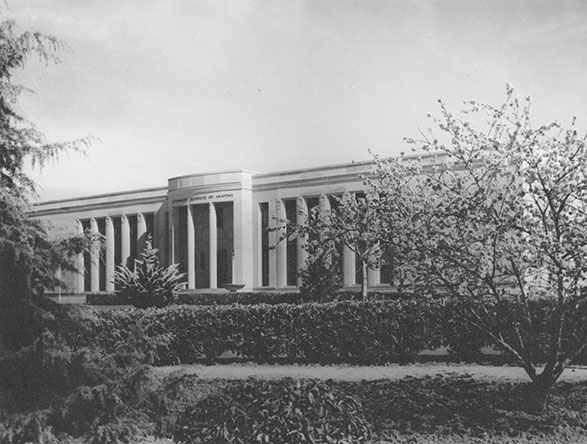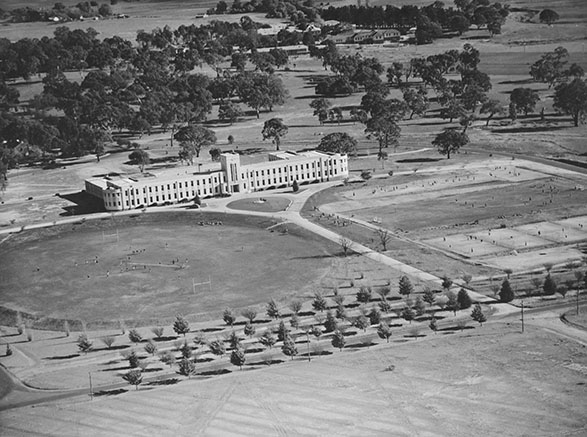The national capital in 1948
At the time of the Easter conference, the total population in the Australian Capital Territory was 17,000 and Canberra was still very much the bush capital. As is clear from the image of Civic Centre, attractive facilities were being developed but the proposal to establish a first-rate research university in an isolated town, though endorsed by many, seemed to others to require the greatest leap of faith.
Architect Walter Burley Griffin, who in 1912 won the competition to design the city, firmly placed a university on his plan. Before long the site was occupied by mostly temporary accommodation for Canberra’s embryonic administration. In April 1948 none of these existing buildings had been officially taken over by the ANU and while a few piles of timber from dismantled army huts had been delivered, no sod had yet been turned for new accommodation. The Institute of Anatomy (later, the National Film and Sound Archive), the largest - and grandest - public building closest to the university site, was venue for the Easter Conference.





